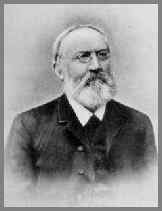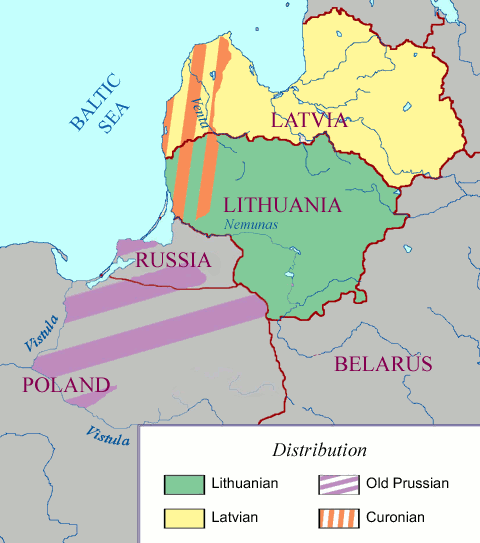|
Lachsargument
In Indo-European studies, the salmon problem or salmon argument (also known by the German language, German term ''Lachsargument'') is an outdated argument in favour of placing the Indo-European urheimat in the Baltic region, as opposed to the Eurasian Steppe, based on the cognate etymology of the respective words for salmon in Germanic languages, Germanic and Balto-Slavic languages. The word's wide distribution likely means it existed in its current form in a Proto-Indo-European language. The reasoning went as follows: Since the term for Atlantic salmon in the Germanic, Baltic and Slavic languages could be derived from a common Proto-Indo-European root ''*laḱs-'', the urheimat of the Indo-Europeans must be where both the languages and the object it describes can be found: Northern-Central Europe. The argument was first put forward by German philologist Otto Schrader (philologist), Otto Schrader in 1883. The argument was subject to continued scholarly debate throughout the la ... [...More Info...] [...Related Items...] OR: [Wikipedia] [Google] [Baidu] |
Indo-European Studies
Indo-European studies () is a field of linguistics and an interdisciplinary field of study dealing with Indo-European languages, both current and extinct. The goal of those engaged in these studies is to amass information about the hypothetical proto-language from which all of these languages are descended, a language dubbed Proto-Indo-European (PIE), and its speakers, the Proto-Indo-Europeans, including their society and Proto-Indo-European mythology. The studies cover where the language originated and how it spread. This article also lists Indo-European scholars, centres, journals and book series. Naming The term ''Indo-European'' itself now current in English literature, was coined in 1813 by the British scholar Sir Thomas Young, although at that time, there was no consensus as to the naming of the recently discovered language family. However, he seems to have used it as a geographical term, to indicate the newly proposed language family in Eurasia spanning from the Indian sub ... [...More Info...] [...Related Items...] OR: [Wikipedia] [Google] [Baidu] |
Salmo Trutta Ciscaucasicus
''Salmo ciscaucasicus'', the Caspian salmon or Terek trout, is a salmonid fish endemic to the Caspian Sea and its inflowing rivers.''Salmo ciscaucasicus'' at www.fishbase.org. It was described in 1967 originally as a of ''''.Dorofeeva, E. A., 1967 ''Comparative morphological principles of taxonomy of East European salmons.'' Voprosy Ikhtiologii v. 7: 3-17. ''S. ciscaucasicus'' lives on the western shore of the lake from northern |
North Sea
The North Sea lies between Great Britain, Denmark, Norway, Germany, the Netherlands, Belgium, and France. A sea on the European continental shelf, it connects to the Atlantic Ocean through the English Channel in the south and the Norwegian Sea in the north. It is more than long and wide, covering . It hosts key north European shipping lanes and is a major fishery. The coast is a popular destination for recreation and tourism in bordering countries, and a rich source of energy resources, including wind energy, wind and wave power. The North Sea has featured prominently in geopolitical and military affairs, particularly in Northern Europe, from the Middle Ages to the modern era. It was also important globally through the power northern Europeans projected worldwide during much of the Middle Ages and into the modern era. The North Sea was the centre of the Viking Age, Vikings' rise. The Hanseatic League, the Dutch Golden Age, Dutch Republic, and Kingdom of Great Britain, Brita ... [...More Info...] [...Related Items...] OR: [Wikipedia] [Google] [Baidu] |
Baltic Sea
The Baltic Sea is an arm of the Atlantic Ocean that is enclosed by the countries of Denmark, Estonia, Finland, Germany, Latvia, Lithuania, Poland, Russia, Sweden, and the North European Plain, North and Central European Plain regions. It is the world's largest brackish water basin. The sea stretches from 53°N to 66°N latitude and from 10°E to 30°E longitude. It is a Continental shelf#Shelf seas, shelf sea and marginal sea of the Atlantic with limited water exchange between the two, making it an inland sea. The Baltic Sea drains through the Danish straits into the Kattegat by way of the Øresund, Great Belt and Little Belt. It includes the Gulf of Bothnia (divided into the Bothnian Bay and the Bothnian Sea), the Gulf of Finland, the Gulf of Riga and the Bay of Gdańsk. The "Baltic Proper" is bordered on its northern edge, at latitude 60°N, by Åland and the Gulf of Bothnia, on its northeastern edge by the Gulf of Finland, on its eastern edge by the Gulf of Riga, and in the ... [...More Info...] [...Related Items...] OR: [Wikipedia] [Google] [Baidu] |
Zoogeography
Zoogeography is the branch of the science of biogeography that is concerned with geographic distribution (present and past) of animal species. As a multifaceted field of study, zoogeography incorporates methods of molecular biology, genetics, morphology, phylogenetics, and Geographic Information Systems (GIS) to delineate evolutionary events within defined regions of study around the globe. As proposed by Alfred Russel Wallace, known as the father of zoogeography, phylogenetic affinities can be quantified among zoogeographic regions, further elucidating the phenomena surrounding geographic distributions of organisms and explaining evolutionary relationships of taxa. Advancements in molecular biology and theory of evolution within zoological research has unraveled questions concerning speciation events and has expanded phylogenic relationships amongst taxa. Integration of phylogenetics with GIS provides a means for communicating evolutionary origins through cartographic design. ... [...More Info...] [...Related Items...] OR: [Wikipedia] [Google] [Baidu] |
Friedrich Kluge
Friedrich Kluge (21 June 1856 – 21 May 1926) was a German philologist and educator. He is known for the ''Etymological Dictionary of the German Language'' (), which was first published in 1883. Biography Kluge was born in Cologne. He studied comparative linguistics and classical and modern philologies at the universities of Leipzig, Strasbourg and Freiburg. As a student, his instructors were August Leskien, Georg Curtius, Friedrich Zarncke and Rudolf Hildebrand at Leipzig and Heinrich Hübschmann, Bernhard ten Brink and Erich Schmidt at the University of Strasbourg.Kluge, Friedrich In: Neue Deutsche Biographie (NDB). Band 12, Duncker & Humblot, Berlin 1980, , S. 140 f. He became a teacher of English and German philology at Strassburg (1880), an assistant professor of German at the [...More Info...] [...Related Items...] OR: [Wikipedia] [Google] [Baidu] |
Brothers Grimm
The Brothers Grimm ( or ), Jacob Grimm, Jacob (1785–1863) and Wilhelm Grimm, Wilhelm (1786–1859), were Germans, German academics who together collected and published folklore. The brothers are among the best-known storytellers of Oral tradition, folktales, popularizing stories such as "Cinderella" ("), "The Frog Prince (story), The Frog Prince" (""), "Hansel and Gretel" ("), "Town Musicians of Bremen" (""), "Little Red Riding Hood" (""), "Rapunzel", "Rumpelstiltskin" (""), "Sleeping Beauty" (""), and "Snow White" (""). Their first collection of folktales, ''Grimms' Fairy Tales, Children's and Household Tales'' (), was first published in 1812. The Brothers Grimm spent their formative years in the town of Hanau in the Landgraviate of Hesse-Kassel. Their father's death in 1796 (when Jacob was 11 and Wilhelm 10) caused great poverty for the family and affected the brothers many years after. Both brothers attended the University of Marburg, where they developed a curiosity about ... [...More Info...] [...Related Items...] OR: [Wikipedia] [Google] [Baidu] |
Deutsches Wörterbuch
The ''Deutsches Wörterbuch'' (; "German Dictionary"), abbreviated ''DWB'', is the largest and most comprehensive dictionary of the German language in existence.Synopsis of the ''Deutsches Wörterbuch'' at the Language Research Centre, Berlin-Brandenburg Academy of Sciences and Humanities, retrieved 27 June 2012.Clifford Wunderlich ''Deutsches Wörterbuch von Jacob und Wilhelm Grimm'' , Andover-Harvard Theological Library, Harvard University Divinity School, April 2012. retrieved 27 June 2012. Encompassing modern |
August Fick
Friedrich Conrad August Fick (May 5, 1833, in Petershagen, Germany – March 24, 1916, in Hildesheim or Breslau) was a German philologist. He spent his life chiefly at Göttingen, where he first studied philology under Theodor Benfey; became a teacher in the Gymnasium, and eventually in 1876 professor of comparative philology at the university A university () is an educational institution, institution of tertiary education and research which awards academic degrees in several Discipline (academia), academic disciplines. ''University'' is derived from the Latin phrase , which roughly ...; in 1887 accepted a professorship in Breslau, but retired four years later; author of a variety of learned works on philology.Fick, Friedrich Conrad August In: Neue Deutsche Biographie (NDB). Band 5, Duncker & Humblot, Berlin 1961, , ... [...More Info...] [...Related Items...] OR: [Wikipedia] [Google] [Baidu] |
Loanword
A loanword (also a loan word, loan-word) is a word at least partly assimilated from one language (the donor language) into another language (the recipient or target language), through the process of borrowing. Borrowing is a metaphorical term that is well established in the linguistic field despite its acknowledged descriptive flaws: nothing is taken away from the donor language and there is no expectation of returning anything (i.e., the loanword). Loanwords may be contrasted with calques, in which a word is borrowed into the recipient language by being directly translated from the donor language rather than being adopted in (an approximation of) its original form. They must also be distinguished from cognates, which are words in two or more related languages that are similar because they share an etymological origin in the ancestral language, rather than because one borrowed the word from the other. Examples and related terms A loanword is distinguished from a calque (or ... [...More Info...] [...Related Items...] OR: [Wikipedia] [Google] [Baidu] |
Slavic Languages
The Slavic languages, also known as the Slavonic languages, are Indo-European languages spoken primarily by the Slavs, Slavic peoples and their descendants. They are thought to descend from a proto-language called Proto-Slavic language, Proto-Slavic, spoken during the Early Middle Ages, which in turn is thought to have descended from the earlier Proto-Balto-Slavic language, linking the Slavic languages to the Baltic languages in a Balto-Slavic languages, Balto-Slavic group within the Indo-European family. The current geographical distribution of natively spoken Slavic languages includes the Balkans, Central and Eastern Europe, and all the way from Western Siberia to the Russian Far East. Furthermore, the diasporas of many Slavic peoples have established isolated minorities of speakers of their languages all over the world. The number of speakers of all Slavic languages together was estimated to be 315 million at the turn of the twenty-first century. It is the largest and most d ... [...More Info...] [...Related Items...] OR: [Wikipedia] [Google] [Baidu] |
Baltic Languages
The Baltic languages are a branch of the Indo-European languages, Indo-European language family spoken natively or as a second language by a population of about 6.5–7.0 million people''"Lietuviai Pasaulyje"'' (PDF) (in Lithuanian). Lietuvos statistikos departamentas. Retrieved 5 May 2015. mainly in areas extending east and southeast of the Baltic Sea in Europe. Together with the Slavic languages, they form the Balto-Slavic languages, Balto-Slavic branch of the Indo-European family. Scholars usually regard them as a single Subgrouping, subgroup divided into two branches: West Baltic languages, West Baltic (containing only extinct languages) and East Baltic languages, East Baltic (containing at least two Modern language, living languages, Lithuanian language, Lithuanian, Latvian l ... [...More Info...] [...Related Items...] OR: [Wikipedia] [Google] [Baidu] |





